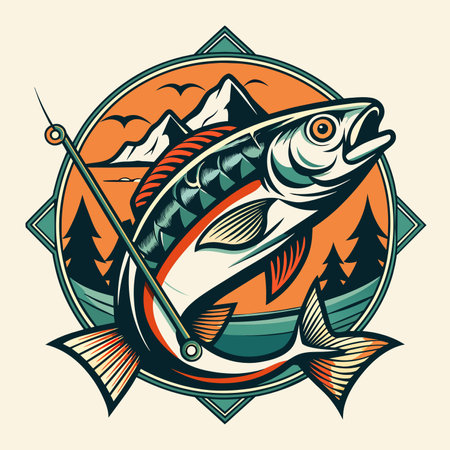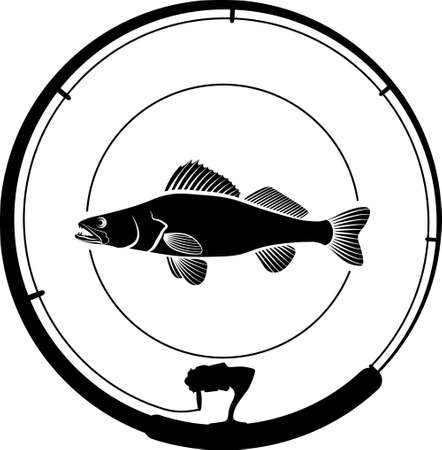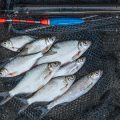Introduction to River Trout Fly Fishing in Britain
River trout fly fishing holds a special place in the hearts of anglers throughout England, Scotland, and Wales. Steeped in tradition and woven into the fabric of British rural life, this cherished pastime is far more than just a sport—it represents a profound connection with the natural world and centuries-old customs. Each region boasts its own distinct character: the chalk streams of southern England are famed for their gin-clear waters and selective wild brown trout, while Scotland’s tumbling rivers and Wales’ swift-flowing brooks offer untamed beauty and challenging fishing conditions. The cultural significance of river trout fly fishing is evident in local festivals, angling clubs, and classic literature that celebrate both the serenity and excitement found on these storied waters. Whether you are drawn by tales of legendary Scottish rivers like the Tweed, the quiet charm of English tributaries such as the Test or Itchen, or the rugged Welsh uplands, learning to fish these rivers invites you into a vibrant community with deep roots and enduring respect for both fish and environment.
Essential Gear & Tackle for British Waters
When fly fishing for river trout in England, Scotland, and Wales, selecting the right equipment is fundamental to your success. The unique characteristics of British rivers—ranging from chalk streams in southern England to peaty Highland burns—require gear that suits both the local conditions and regulations.
Recommended Fly Rods
For most British trout rivers, a 9-foot rod rated for a 4 or 5 weight line is considered optimal. This length provides the reach needed for precise casting under overhanging trees and along narrow banks, while maintaining enough delicacy for presenting small dry flies—an essential skill in clear waters such as those found in Hampshire or the Scottish Borders.
Reels & Lines
Lightweight reels with a smooth drag system are ideal. Since wild trout in UK rivers rarely grow exceptionally large, focus on balance and line retrieval rather than brute strength. Floating lines are standard for most situations, allowing effective presentation of dry flies and nymphs. In early spring or during high water, consider a double taper or weight-forward floating line for better control in windy conditions typical of Welsh upland rivers.
Fly Patterns Suited to British Trout Rivers
| Fly Pattern | Best Season | Region Suitability |
|---|---|---|
| Klinkhamer Special | Spring-Summer | England & Scotland |
| Pheasant Tail Nymph | Year-round | All Regions |
| March Brown Dry | Early Spring | Wales & Borders |
| Sedge/Caddis Emerger | Late Summer-Autumn | Scotland & North England |
| Greenwell’s Glory | Spring-Autumn | Traditional Across Britain |
Tackle Adapted to Local Conditions & Regulations
The often changeable British weather—think sudden downpours or persistent drizzle—makes waterproof clothing and waders essential. Breathable chest waders paired with felt-soled boots offer grip on slippery stones common in northern streams. Always check local byelaws: some English rivers permit only barbless hooks or restrict leader length to protect fragile fish populations.
Strategic Tips for Beginners
If youre new to fly fishing on these isles, start with versatile patterns like the Pheasant Tail Nymph and Greenwell’s Glory. Keep your tackle light and be ready to adapt: a sudden hatch may call for switching from nymphs to emergers within minutes. Above all, respect local customs—catch and release is widely practised across Britain’s best trout fisheries.

3. Understanding Trout Behaviour and River Ecology
To truly excel at river trout fly fishing across England, Scotland, and Wales, it’s essential to appreciate the nuanced behaviour of native brown trout and the unique ecology of each waterway. Trout are highly responsive to their environment; thus, understanding their feeding patterns and preferred habitats forms the backbone of any successful angling strategy.
Trout Feeding Patterns: Timing Is Everything
Trout in British rivers primarily feed on aquatic insects such as mayflies, caddis, and midges, which hatch at specific times throughout the season. Early morning and late evening often prove most productive, especially during a hatch when trout rise to surface feed. Keen observation of insect activity and matching your fly pattern to the current hatch is a time-honoured tactic among local anglers. In faster stretches of water, trout may conserve energy by ambushing prey from behind submerged rocks or in deeper pools—knowing where to cast is just as important as what you cast.
Understanding Local Habitats
The structure of the river—gravel beds, riffles, undercut banks, and overhanging trees—all provide shelter and feeding opportunities for trout. In English chalk streams like the Test or Itchen, clear water demands subtle presentation and fine tippet, while stony Welsh rivers or peaty Scottish burns often require more robust tackle due to stronger currents or larger wild fish. Always take time to study the riverbank for subtle signs: rising fish, swirls beneath the surface, or even a flash of silver can reveal active feeding spots.
How Environmental Factors Influence Fishing Success
British weather is famously unpredictable; rainfall can rapidly change river levels and water clarity. After a spate (a sudden rise in river level), trout may become wary until conditions settle. Water temperature also plays a key role: cooler waters in spring and autumn see more active fish, while summer heat can push trout into deeper pools or shaded runs. Keeping an eye on local reports or chatting with fellow anglers at the riverbank can provide invaluable insights into current conditions and best tactics.
Adapt Your Tactics for Local Success
Ultimately, understanding trout behaviour and river ecology allows you to adapt your approach for each unique setting—whether stalking wild brownies in a Scottish burn or targeting finicky risers on an English chalk stream. By blending careful observation with tailored technique, you’ll not only increase your catch rate but also deepen your connection with Britain’s iconic riverscape.
4. Techniques and Strategies for Success
Mastering Effective Casting Techniques
Successful river trout fly fishing in England, Scotland, and Wales relies heavily on precise casting. The classic overhead cast is a staple, but UK rivers, with their tree-lined banks and variable widths, often demand alternative methods. The roll cast is invaluable when back-casting space is limited, while the sidearm cast helps keep your line low under overhanging branches—a common feature of British waterways.
| Situation | Recommended Cast | Key Benefit |
|---|---|---|
| Narrow or tree-lined banks | Roll Cast | Avoids snags behind you |
| Windy conditions | Sidearm Cast | Keeps line low and accurate |
| Open water sections | Overhead Cast | Maximises distance and control |
Perfecting Fly Presentation
Presentation is everything when targeting wary British trout. In clear chalk streams or peaty highland burns, a natural drift is essential. Mending your line—making small upstream flicks—reduces drag and allows the fly to behave more like natural prey. Dry flies should land softly, while nymphs require subtle upstream casts to sink naturally into feeding lanes.
Reading the Water Like a Local Angler
The ability to interpret river features is a hallmark of successful anglers across the UK. Look for riffles (fast, shallow water), glides (smooth runs), and undercut banks—prime trout habitats. Trout in English rivers may hold just below weed beds, while Scottish browns favour deeper pools after rain. Observing rises, insect hatches, and changes in current helps you select the right spot and fly.
Adapting to Changing Conditions
British weather is famously unpredictable, so flexibility is key. After rainfall, rivers may run higher and coloured—switch to larger, darker flies that stand out. On bright days with low water, scale down your tippet diameter and use smaller patterns for a stealthy approach. As evening falls in summer, be prepared for prolific hatches and switch to emergers or spinners as trout feed aggressively at dusk.
5. Best Locations and Access Tips
Recommended Rivers and Beats in England, Scotland, and Wales
When it comes to river trout fly fishing in the UK, each country offers its own unique flavour of waters, scenery, and local culture. In England, classic chalk streams such as the River Test and River Itchen in Hampshire are world-renowned for their clear waters and challenging wild trout. The Yorkshire Dales provide excellent opportunities on rivers like the Wharfe and Ure, offering a blend of wild and stocked trout in picturesque surroundings.
Scotland is famed for its wild brown trout, with the River Tweed in the Borders and the Highland rivers such as the Dee and Spey standing out. These rivers not only offer stunning landscapes but also a more traditional approach to fly fishing, often requiring booking a specific beat through local estates or angling associations.
In Wales, rivers like the Usk and Wye are favourites among locals and visiting anglers alike. These rivers boast healthy stocks of wild trout and are celebrated for both their beauty and accessibility. The Taff, running through South Wales, has undergone an impressive revival, now supporting quality urban fly fishing experiences.
Permits, Local Clubs, and Public Access Rights
Most UK rivers require anglers to obtain a permit or day ticket before fishing. These are usually available from local angling clubs, tackle shops, or online platforms. In England and Wales, you must also hold a valid Environment Agency rod licence in addition to any water-specific permit.
Local angling clubs play a crucial role in managing river access. Joining a club can provide better rates on season tickets, insider knowledge on productive beats, organised events, and mentorship for beginners. Many clubs manage stretches of river that are not open to general public access, so membership can significantly broaden your fishing options.
Etiquette on the Water
Respecting other anglers is paramount: always check if anyone is already fishing a beat before starting; give others plenty of space; and avoid wading directly into pools where fish may be holding. Many UK rivers have established traditions such as “upstream only” wading or casting rules—ask locals or club officials if unsure.
Public Access Rights
Public rights of way along rivers exist in some locations—especially in Scotland, which enjoys more liberal access laws under the Scottish Outdoor Access Code—but much of England’s and Wales’s best water is privately owned or club-managed. Always check signage or online maps before entering new stretches of riverbank to avoid trespassing.
By familiarising yourself with these locations, securing the proper permits, respecting local etiquette, and understanding access rights, you’ll set yourself up for a rewarding introduction to river trout fly fishing across England, Scotland, and Wales.
6. Conservation, Ethics, and Local Customs
Responsible Angling: Protecting the Rivers
When fly fishing for river trout across England, Scotland, and Wales, anglers are custodians of both a cherished tradition and delicate ecosystems. Practising catch-and-release is widely encouraged, especially on wild trout streams, to sustain healthy fish stocks for future generations. Always use barbless hooks or pinch down the barbs to minimise harm during release. Handle trout with wet hands and keep them in the water as much as possible to ensure a safe return.
Conservation Efforts Across Britain
Various local organisations and river trusts work tirelessly to protect and restore river habitats vital for trout survival. Get involved by supporting or volunteering with groups such as The Wild Trout Trust or local angling associations. Respect riverbank vegetation and avoid disturbing spawning beds (redds) during spring and autumn. It’s also essential to follow any seasonal restrictions or quotas set by local authorities or fishery owners, which are there to preserve fragile populations.
Ethical Angling Practices
Adhering to the unwritten code of conduct is central to British fly fishing culture. Respect fellow anglers by maintaining a courteous distance on the riverbank—often referred to as “giving a wide berth.” If you arrive at a busy beat, always ask before stepping in or passing behind other anglers. Leave no litter behind; pack out all tackle, line, and rubbish to keep rivers pristine.
Respecting Local Customs and Traditions
The heritage of British fly fishing is steeped in tradition, from dress codes on exclusive beats to time-honoured etiquette when greeting landowners or ghillies. In Scotland, it’s customary to doff your cap when meeting others on the water. Many clubs require visitors to sign in at the lodge and observe specific rules about wading, fly patterns, or even fishing hours. When invited onto private water, always express gratitude—good manners go a long way in securing future access.
In Summary
Embracing conservation-minded practices and respecting both the natural environment and local customs ensures that river trout fly fishing remains sustainable and enjoyable across Britain’s storied waterways. By fishing responsibly and immersing yourself in the rich tapestry of British angling culture, you’ll not only hone your skills but also help preserve these unique experiences for generations yet to come.

